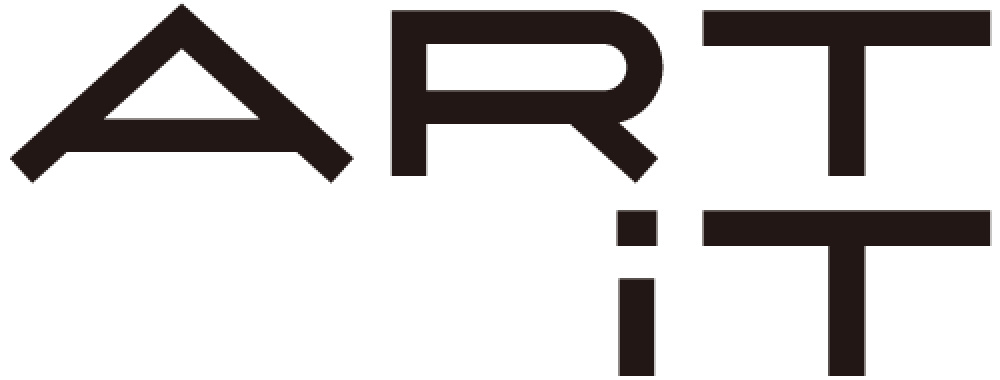From the Hara Museum of Contemporary Art, Tokyo
On Friday, September 9, a press conference was held for Art Scope 2009-2011: Invisible Memories. Below is a scene from the event, which was held in The Hall at the Hara Museum.
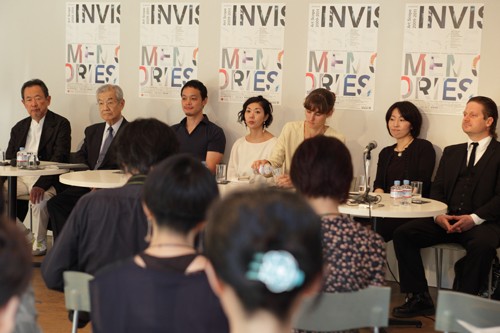
From left: Toshio Hara (Director, Hara Museum), Keisuke Egashira (Chairman, Daimler Japan), Meiro Koizumi (artist), Hiroe Saeki (artist), Eva Berendes (artist), Yumi Matsushita (interpreter), Jan Scharrelmann (artist)
After questions from the press, a guided tour was conducted, with each artist talking about their work.
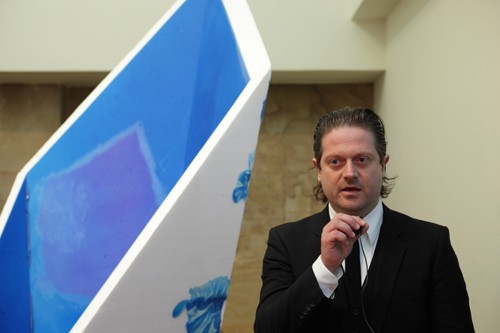
During his stay in Japan, Scharrelmann lived in Akihabara and enjoyed mixing with people in pubs. One of the things that impressed him was the orderliness with which crowds on the Tokyo streets moved and the fact that they did so without bumping into each other, as if they were being guided by an “invisible hand.”
“Inspired by my stay in Tokyo, I tried to express the image of inner energy. My material was Styrofoam, painted on the inside with epoxy resin and paint. The works combine lightness and strength. In the past, I enjoyed watching samurai movies, and so the shape of the sculptures is that of bamboo cleanly sliced by a sword. The works express the “now” that is frozen between the “past” and the “future.” They also express the idea of a path that connects to some kind of holy chalice or wisdom. My work on the second floor is made with the same material as those on the first floor—Styrofoam— but looks very different. It defines a curve like the path of a shooting star. For the paint, I mixed in rust and other things from nature.”
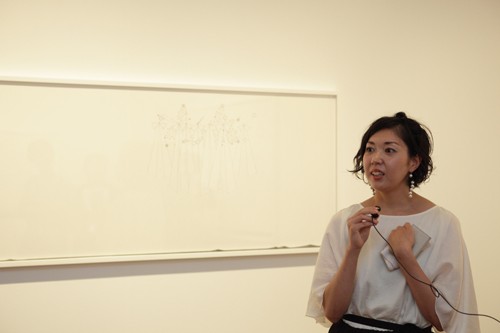
Hiroe Saeki makes highly detailed drawings with lead or mechanical pencils. Placing herself in front of the blank sheet of paper, without a prior sketch or any other preparations, she starts with a single line. This leads to the next and then the next, until a drawing unfolds like a kind of journey. When she is working, she stays glued in front of the drawing from morning to night, so as not to break her concentration.
“I was in Germany during the summer of last year. I enjoy traveling and have gone on many trips on my own, but this was the first time to stay three months in a foreign country. I went on many walks and would pick up many images. It takes a lot of concentration to draw, so I did most of my work after returning to Japan, starting from the spring of this year. For me, it was a challenge figuring out how to incorporate the monochrome, linear imagery from the streets of Germany into the organic images of my drawings.”
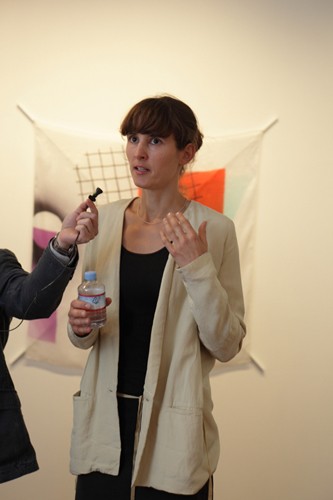
Eva Berendes uses hard materials and elements, such as metals and geometric patterns, and yet her work is characterized by a feeling of lightness. They remind us of such interior elements as curtains and screens. In the spring of 2009, Eva came to Japan with her husband and six-month old child.
“The group of works here were all made a year after I returned from Japan. While in Tokyo, we spent the whole time walking through the city. I had a particular interest in Japanese architecture of the late-70s and the ‘80s. In the past, my interest was European architecture, but in Japan I felt there was greater freedom with which different architectural styles are integrated together in the city. Previously, in Europe, I also felt a conflict existed between “craft” and “fine art,” but in Japan, the two seem to be well integrated. This discovery has given my work a new angle.”
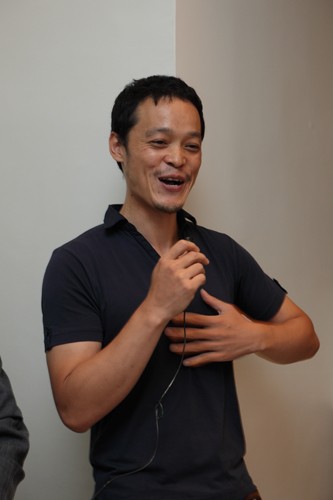
When making his videos, the director Meiro Koizumi develops the storyline through a process of dialog with the other actors. He became interested in making work centered on the theme of “Japan” after living in Holland and other places abroad. During his time in Berlin, he encountered various things, such as a monument dedicated to the dismantled Berlin Wall, a roadside plaque inscribed with the names of Jews taken to concentration camps, which made him think about history and society.
“I have two videos in this show, one of which I made specifically for Art Scope. The subject of both is the “tokko” or kamikaze pilot. Returning to Japan from abroad in 2007, I became interested in making work on the theme of Japan. I used the tokko as the subject because for me it was the most challenging of topics to deal with. That is to say, in my work, I am constantly trying to give form to contradictions that exist within me. And when I probe deeper into those contradictions, I find myself being led to history.”
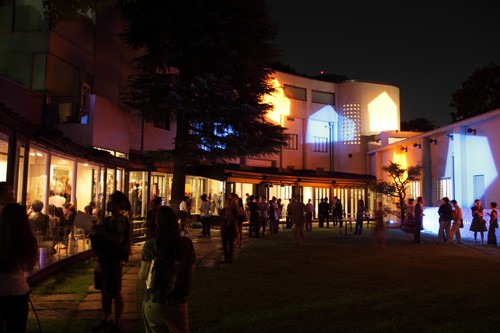
photos by Taro Kanaizuka
—————————————————
Please check here for Hara Museum access information
Art Scope 2009-2011: Invisible Memories
September 10 (Saturday) – December 11 (Sunday)
Now on sale. Yoshitmo Nara Charity Large-sized Postcard Set
Hara Museum is now participating in MuPon (museum discount ticket system using iPhone application)! http://www.tokyoartbeat.com/apps/mupon
Visit Hara Museum and Hara Museum ARC Twitter (in Japanese only) (account name: @haramuseum @HaraMuseumARC)
http://twitter.com/haramuseum
http://twitter.com/HaraMuseumARC
http://www.haramuseum.or.jp (museum website)
http://mobile.haramuseum.or.jp (mobile site)
